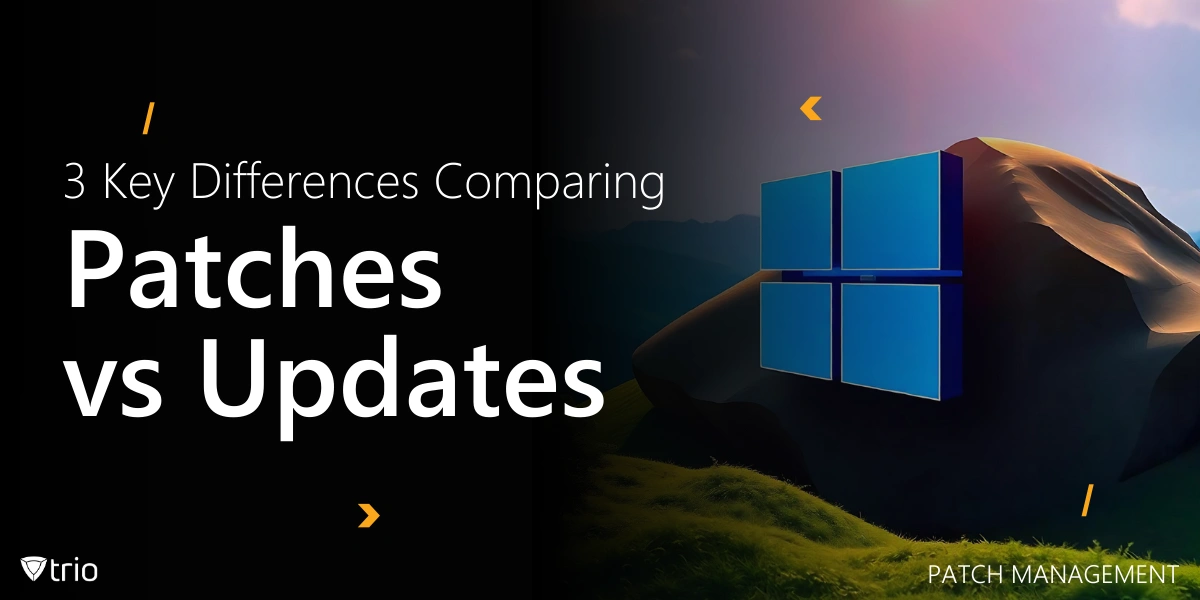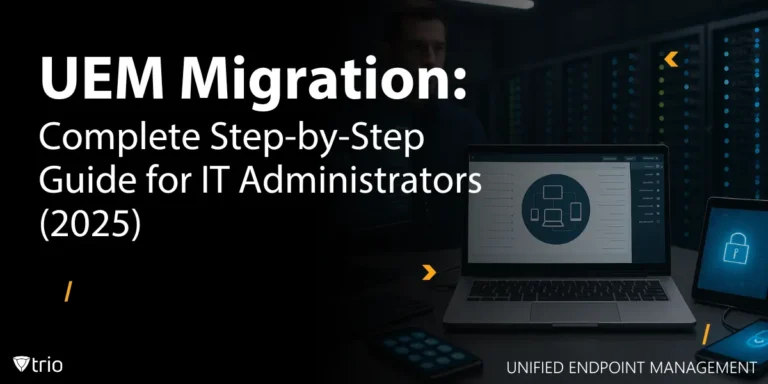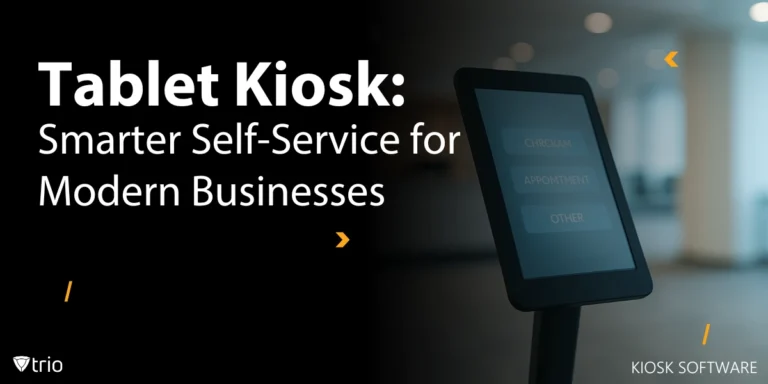In the fast-paced world of technology, staying ahead of the curve is not just an advantage—it's a necessity. For businesses, this means ensuring that all software and systems are running smoothly, securely, and efficiently. Two terms that often come up in this context are "patch" and "update." While they may seem interchangeable, they serve distinct purposes and understanding the difference can significantly impact your business operations. In this blog post, we’ll delve into the nuances of patches and updates, explore their importance, and introduce you to a Mobile Device Management (MDM) solution that can simplify the process: Trio.
What is a Patch?
A patch is a piece of software designed to fix specific issues within an existing program. These issues could range from security patches addressing vulnerabilities to minor bugs that affect performance. Patches are typically released by software vendors as soon as a problem is identified, ensuring that users can quickly resolve any issues without waiting for a full software update.
Key Characteristics of Patches:
- Targeted Fixes: Patches are designed to address specific problems rather than overhaul the entire software.
- Frequent Releases: Because they are focused on immediate issues, patches are often released more frequently than updates.
- Security-Centric: Many patches are aimed at closing security loopholes, making them critical for protecting sensitive data.
What is an Update?
An update, on the other hand, is a more comprehensive change to the software. Updates can include new features, improvements to existing functionalities, and sometimes even a complete overhaul of the user interface. Unlike patches, updates are usually part of a scheduled release cycle and are intended to enhance the overall user experience.
Key Characteristics of Updates:
- Comprehensive Changes: Updates often include a wide range of modifications, from new features to performance enhancements.
- Scheduled Releases: Updates are typically rolled out on a regular schedule, such as quarterly or annually.
- User Experience Focus: The primary goal of an update is to improve the overall functionality and usability of the software.

3 Differences Between a Security Patch and a Feature Update
Here are three ways to differentiate patches vs updating:
1. Scope and Purpose
A patch is a small piece of software designed to fix specific vulnerabilities, bugs, or security loopholes in an application or operating system. Patches are generally targeted updates, meaning they address precise issues rather than making broad changes to the software. Developers release patches as soon as they discover critical problems that need immediate attention, often in response to security threats or performance flaws. Because of their focused nature, patches do not typically introduce new features but rather correct existing ones.
On the other hand, an update is a broader enhancement that can include patches but also introduces new functionalities, optimizations, or significant performance improvements. Updates can be planned releases aimed at keeping software relevant and efficient, often aligning with new technologies, user needs, or market demands. Unlike patches, which are primarily reactive, updates can be both proactive and strategic, helping software evolve over time rather than just maintaining its stability.
A major implication of this difference is that while patches are mostly essential for security and maintenance, updates may not always be necessary for immediate implementation. Patches should be applied as soon as possible to avoid security risks, whereas updates can sometimes be scheduled based on user preference or organizational policies.
2. Size and Complexity
Patches are usually small in size and require minimal system resources to install. Because they are designed to address isolated issues, they do not require major modifications to the underlying software architecture. In many cases, patches can be applied quickly, often without the need for a system reboot. This makes them less disruptive, ensuring that security vulnerabilities or software bugs are fixed with minimal downtime. Some patches, especially security-related ones, may be automatically installed without user intervention to ensure continuous protection.
Updates, in contrast, are typically larger and more complex because they often introduce multiple changes at once. These can include new user interface designs, compatibility enhancements, feature additions, or overall performance optimizations. Due to their size, updates may require longer installation times, more system resources, and sometimes even a complete software reinstallation. Additionally, updates often require extensive testing to ensure they do not introduce new compatibility issues, especially in enterprise environments where stability is critical.
Because of their complexity, updates may also require users to adapt to changes in the software’s interface or functionality. This is different from patches, which aim to be as seamless as possible. Large updates, especially in enterprise environments, may necessitate training or documentation changes to help users transition smoothly.
3. Frequency of Release
Patches are released on an as-needed basis, often in response to newly discovered security threats, software vulnerabilities, or stability issues. Their release cycle is unpredictable and depends on how often new issues arise. When a critical security flaw is found, developers rush to release a patch as soon as possible to prevent exploitation by hackers. This means that patches can be frequent, sometimes even multiple times a month, depending on the nature of the software and its exposure to threats.
Updates, on the other hand, follow a more structured release cycle. Many software companies schedule updates periodically, such as monthly, quarterly, or annually. For example, operating systems like Windows release major updates at set intervals, often including new features and overall improvements. Because updates involve extensive planning, testing, and quality assurance, their release cycle is much slower than that of patches. Some updates may even be delayed if additional testing is required to prevent potential issues from affecting users.
This difference in release frequency means that while patches are mostly reactive, updates are more strategic. Organizations and individual users often apply patches immediately to maintain security but may choose to delay or test updates before deployment to ensure they do not disrupt workflows or introduce new problems.
The Challenges of Managing Patches and Updates
While the importance of patches and updates is clear, managing them can be a daunting task, especially for businesses with multiple devices and systems. Here are some common challenges:
- Volume: With numerous devices and software applications, keeping track of all necessary patches and updates can be overwhelming.
- Compatibility: Ensuring that patches and updates are compatible with existing systems and do not disrupt operations is a significant concern.
- Timeliness: Applying patches and updates in a timely manner is crucial but can be difficult to manage manually.
- Resource Allocation: Dedicated IT resources are often required to manage the patching and updating process, which can strain smaller teams.
This is where Mobile Device Management (MDM) solutions come into play. MDM solutions provide a centralized platform for managing all devices within an organization, ensuring that patch management and updates are applied efficiently and effectively.
Conclusion
In conclusion, while patches and updates serve different purposes, both are essential for maintaining the security and efficiency of your business operations. Managing the patch management process effectively can be challenging, but with the right tools, it doesn’t have to be. Trio is a robust, user-friendly MDM solution that can simplify the process of cloud patch management, ensuring that your devices are always up-to-date and secure. Take the first step towards better device management—sign up for Trio’s free trial today!
Get Ahead of the Curve
Every organization today needs a solution to automate time-consuming tasks and strengthen security.
Without the right tools, manual processes drain resources and leave gaps in protection. Trio MDM is designed to solve this problem, automating key tasks, boosting security, and ensuring compliance with ease.
Don't let inefficiencies hold you back. Learn how Trio MDM can revolutionize your IT operations or request a free trial today!





